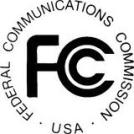Free Lifeline Phone
History & Fraud Issues
Lifeline phone service is a Federally sponsored program that offers
free cell phone service to families in need. Who qualifies is
defined by having low income that is clearly outlined at a State
level. The program is described as helping families with
critical activities like finding a job, staying in touch with family,
and getting help in emergencies.
Some History
Lifeline actually began providing assistance to those in need of landlines starting in 1985. As the wireless industry evolved, now essentially well on its way to replacing land line service, Lifeline was expanded to begin including programs to support wireless phones. As the prepaid wireless industry sprung out of the low/no credit market, Lifeline was first launched in partnership with wireless carriers providing prepaid service in 2005. Of course, prepaid is now very much mainstream, though retains its close ties and interest in growing Lifeline phone service programs.Program Abuse
According to Lifeline program guidelines, any given household can only participate in ONE Lifeline program. For example, the same household cannot have assistance for both a landline and a wireless phone, nor can it have two wireless phones. The problem has been that participants (i.e. customers) have been asked to essentially self-regulate. The general deterrent has been that violators, if found, are subject to criminal and/or civil penalties.Unfortunately, fraud has been a problem, costing the government (funded by fees that telecoms pass along to customers in our monthly bills) hundreds of millions of dollars annually. It's not clear whether this abuse has led to less households being helped, lower quality service (ex. low quality phones), or simply a general waste that could be used for other Federally support programs that use these funds. Either way, it has been identified as a real problem, which they are seeking to aggressively address. If they don't get the problem under control, it could threaten the ability for the entire program to continue.
Lifeline Phone Service Fraud Fixes & Improvements
Like it or not, the fraud issues need to be fixed to ensure the program can continue to thrive. It certainly seems to be taking a long time to get these pretty basic things done, but nonetheless, these fixes will ultimately be implemented:- National Lifeline Accountability Database
- This is the most obvious and needed piece of the
puzzle. It's a shared database that all Lifeline providers
will feed into, and use, that keeps track of which households already
have Lifeline service. That way people won't be able to
submit multiple applications and get service across different carriers,
essentially cheating the system.
- Eligibility Database
- Historically people have had to apply and provide proof
of eligibility upon initial application and EVERY year thereafter to
keep the
service. Not only is this prone to fraud (falsification of
documentation), but is also a huge burden to customers to renew, as
well as carriers to track and manage. This database will be a
resource
for providers to instantly determine if someone is eligible for the
program.
- Changing Definition Of "Household"
- Historically "household" has been defined as a USPS
mailing address. Unfortunately, separate families living in
the same location could still only get one phone. Changing
the definition to "Economic Unit" means low-income families living in
the same home (i.e. the same address) can each successfully apply for
Lifeline assistance. This is a huge win for sure!
- Adding Broadband
- Lifeline initially only offered voice and text; adding broadband service to the mix will help to update the program to modern needs. It's unclear whether this will be broadband access using a phone/tethering, or a separate broadband device, or both. This initiative includes offering training at libraries and schools to ensure that people not only have access to broadband, but also understand how to use the technology.
Phones Aren't Included
The Lifeline program actually only covers the cost of phone service, and not the cost of the actual phone. Most carriers, however, use a portion of the funds they receive to offer free phones. Hopefully over time carriers will offer higher quality, and a better selection of phones, which has been a huge issue and source of complaints amongst users of these phones who described them as extremely low quality, and which don't typically include keyboards for easy text messaging.Airfair Lifeline Reload Cards
In January 2014, Ready Wireless, in partnership with inComm, launched the universal Airfair Lifeline Reload card, which enables customers using a participating Lifeline service to easily purchase additional services for theirConclusion
Lifeline Phone Service has been growing faster than the program and carriers can reasonably support. As a result, problems with applications, renewals, and fraud have been growing. Regardless, it's a great service, and there are steps being taken to dramatically improve the overall program. Check out the Free Cell Phone Service section to learn about your provider options, as well as share your thoughts and experiences with these programs. Or check out a list of Lifeline Providers!Learn how to make money as a Lifeline Free Cell Phone Service Agent!
Home
›
Free Cell Phone Service
›
FCC Lifeline Phone History & Fraud
| Be Heard! Let prepaid wireless providers know what you want; fill out the survey now. |



Comments
Have your say about what you just read! Leave a comment in the box below.